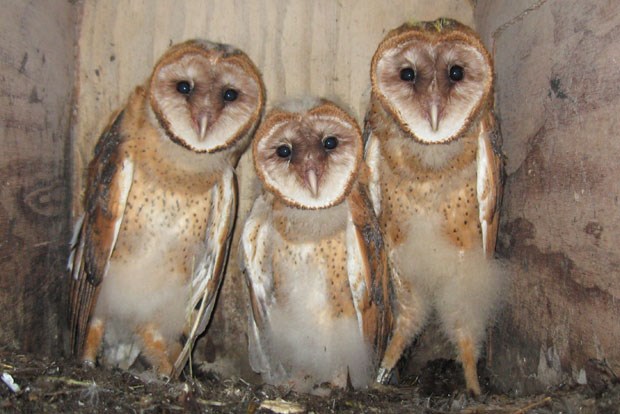Indigenous to the Fraser Valley, western barn owls can be a berry grower’s best friend, patrolling farm fields at night for voles and other unwelcome visitors. By weight, these owls consume more rodents than most other predators, making them one of the most economically valuable wildlife animals for agriculture.
In recent years, however, these predatory powerhouses have faced mounting pressures such as habitat loss and secondary poisoning from consuming pests with rodenticide in their systems.
In an effort to lift the owls from the threatened species list, the Fraser Basin Council Society teamed with local growers to explore an integrated pest management approach (IPM) that would reduce rodenticide use and provide habitat and nesting sites to host western barn owls.
According to project manager Christina Toth, part of the problem for farmers was a lack of clarity on rodenticide application levels.
“By educating producers on the correct and appropriate application to protect their crops, they can not only save time, money and labour, but help protect biodiversity,” Toth explains, adding that the benefits extend beyond owls to other predatory raptors and mammals potentially affected by rodenticide use.
Fact sheets in both English and Punjabi are now available to growers, offering best practices for rodenticide use, as well as tips on how to assess vole presence and damage to crops and how to develop more effective, economical and environmentally sustainable IPM plans.
So far 11 blueberry farms have implemented best management practices for rodenticide use and installed barn owl nest boxes to help control voles.
Toth sees the project as a groundbreaking initiative, both in terms of farm management and environmental stewardship.
“We’ve had amazing response from both conventional and organic growers eager for information that will help them enhance the relationship between agriculture and the environment,” she says.
Given that B.C. is one of the largest highbush blueberry-growing regions in the world, the project was especially timely.
Parm Bains, who grows both conventional and organic blueberries, is relieved a new approach for pest control is available after having long struggled with the vole problem.
“In the last 10 years especially we’ve seen the problem getting worse and worse — in conventional fields, we’re having to use rodenticides far more frequently, which of course carries both environmental and economic impacts.”
With new barn owl nest boxes installed in his fields, Westberry Farms is now part of the growing industry shift that prioritizes sustainability.
And while the focus centered mostly on blueberry growers, the resources developed through the project are applicable to other agricultural sectors, including vegetable and tree fruit growers, viticulture, nurseries and the newly expanding small grains and hops sectors.
Fact sheets and information on nest boxes are available to growers through the BC Blueberry Council website (bcblueberry.com) and its new smartphone app.
Funding for this project was provided by the federal and provincial governments and delivered by the Investment Agriculture Foundation of BC (IAF). IAF is an industry-led not-for-profit organization that works with the agrifood industry to strategically invest federal and provincial funds toward projects that have the potential to turn ideas into solutions. Visit iafbc.ca for information about funding opportunities.



